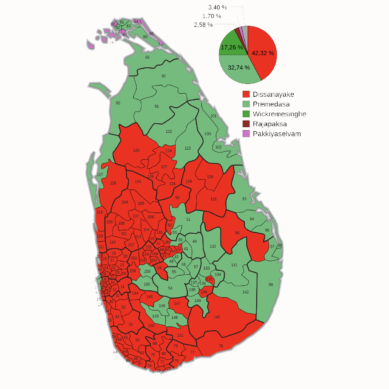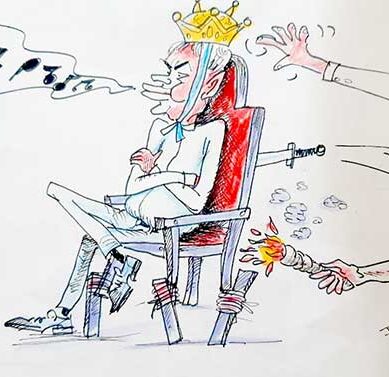
In the 1980s, doctors at an English hospital deliberately tried to infect 15 volunteers with a coronavirus. COVID-19 did not yet exist—what interested those doctors was a coronavirus in the same family called 229E, which causes the common cold. 229E is both ubiquitous and obscure. Most of us have had it, probably first as children, but the resulting colds were so mild as to be unremarkable. And indeed, of the 15 adult volunteers who got 229E misted up their nose, only ten became infected, and of those, only eight developed cold symptoms.
The following year, the doctors repeated their experiment. They tracked down all but one of the original volunteers and sprayed 229E up their noses again. Six of the previously infected became reinfected, but the second time, none developed symptoms. From this, the doctors surmised that immunity against coronavirus infection wanes quickly, and reinfections are common. But subsequent infections are milder—even asymptomatic. Not only do most of us likely to have been infected with 229E before, but we’ve probably been infected more than once. (Source – The Atlantic Science Archive – by Sarah Zhang) https://www.theatlantic.com/science/archive/2021/08/how-we-live-coronavirus-forever/619783/
This tiny study made little impression at the time. In the ’80s and ’90s, coronaviruses still belonged to the backwater of viral research because the colds they caused seemed trivial in the grand scheme of human health. Then, in the spring of 2020, scientists urgently searching for clues to immunity against a novel coronavirus rediscovered this decades-old research. Before the emergence of SARS-CoV-2, which causes COVID-19, only four known coronaviruses were circulating among humans, including 229E. All four of the most recent coronaviruses cause common colds, and in the most optimistic scenario, experts have concluded that the newest coronavirus will end up as the fifth. In that case, COVID-19 might look a lot like a cold from 229E—recurrent but largely unremarkable.
Globally, the number of weekly COVID-19 cases and deaths continuing to decline. This is a trend that has been observed since August. Over 3.1 million new cases and just over 54 000 new deaths were reported during the week of 27 September to 3 October 2021. Cases this week decreased by 9% as compared to the previous week, while deaths remained similar. All regions reported a decline in the number of new topics this week apart from the European Region, which stayed identical to the week before. The most significant decrease in new weekly cases was reported from the African Region (43%), followed by the Eastern Mediterranean Region (21%), the South-East Asia Region (19%), the Region of the Americas (12%) and the Western Pacific (12%). The cumulative number of confirmed cases reported globally is now over 234 million, and the cumulative number of deaths is just under 4.8 million.
That future may be hard to imagine with intensive-care units filling up yet again during this Delta surge. But the pandemic will end. One way or another, it will end. The current spikes in cases and deaths are the result of a novel coronavirus meeting naive immune systems. The goal is that more (80%) people have gained some immunity through either vaccination or infection; preferably vaccination, the coronavirus will transition to what epidemiologist’s call “endemic.” It won’t be eliminated, but it won’t spend our lives anymore.
With that blanket of initial immunity laid down, there will be fewer hospitalizations and fewer deaths from COVID-19. Boosters can periodically re-up immunity too. Cases may continue to rise and fall in this scenario, perhaps seasonally, but the worst outcomes will be avoided.
Nobody knows precisely how the four common-cold coronaviruses first came to infect humans, but some have speculated that at least one also began with a pandemic. If immunity to the new coronavirus wanes as it does with these others, then it will keep causing reinfections and breakthrough infections, more and more of them over time, but still mild enough. We’ll have to adjust our thinking about COVID-19 too. The coronavirus is not something we can avoid forever; we must prepare for the possibility that we will all get exposed one way or another. “This is something we’re going to have to live with,” says Richard Webby, an infectious disease researcher at St. Jude. “And so long as it’s not impacting health care as a whole, then I think we can.” The coronavirus will no longer be novel to our immune systems or our society.
The virus itself will also change with time. As more people gain immunity via either infection or vaccination, the coronavirus will try to find ways to evade that immunity too. Living with a circulating virus is a natural consequence; the flu also mutates every year in response to existing immunity. But in the endemic scenario, where many people have some immunity, the coronavirus will not infect as many people or replicate as many times in each person it infects. “I’m very confident that the rate of adaptation is going to be set by the prevalence of SARS-CoV-2 in the world,” Cobey says. You might think of viral replication as buying lottery tickets, in which the virus accumulates random mutations that very occasionally help it spread. And the fewer lottery tickets the virus has, the less likely it is to hit the mutation jackpot. The appearance of troubling new variants may slow down.
Reinfections with the four common coronaviruses are likely driven by a combination of our immunity fading and the viruses themselves evolving. Putting together everything we do know; a pattern starts to emerge: We are likely first exposed to these common coronaviruses as children when the resulting disease tends to be mild; our immune systems get rusty; the virus changes; we get reinfected; the immune response has been updated; the immune system gets rusty again; the virus changes again; we get infected. And so on.
In the best case, COVID-19 will follow the same pattern, with subsequent infections being mild, says Stephen Morse, an epidemiologist at Columbia University. “If the burden of disease is not high, we take [the virus] very much for granted,” he says. Still, these colds are not entirely benign; one of the common-cold coronaviruses has caused deadly outbreaks in nursing homes before. COVID-19 looks like the flu in a less good scenario, killing 12,000 to 61,000 Americans a year, depending on the season’s severity. But deaths alone do not capture the full impact of COVID-19. “A big question mark there is long COVID,” says Yonatan Grad, an immunologist and infectious-disease researcher at Harvard. There are still no data to prove how well the vaccines prevent long COVID. Still, experts generally agree that a vaccinated immune system is better prepared to fight off the virus without doing collateral damage.
On the other hand, enormous pressure has been brought to bear on the countries of the Asia/Pacific, fuelling a sharp spike in the pandemic throughout the region. Demands for a shift in course are likewise directed at China, the world’s most populous country, which has limited the death toll to less than 5,000 in a population of 1.4 billion through aggressive public health measures.
















































